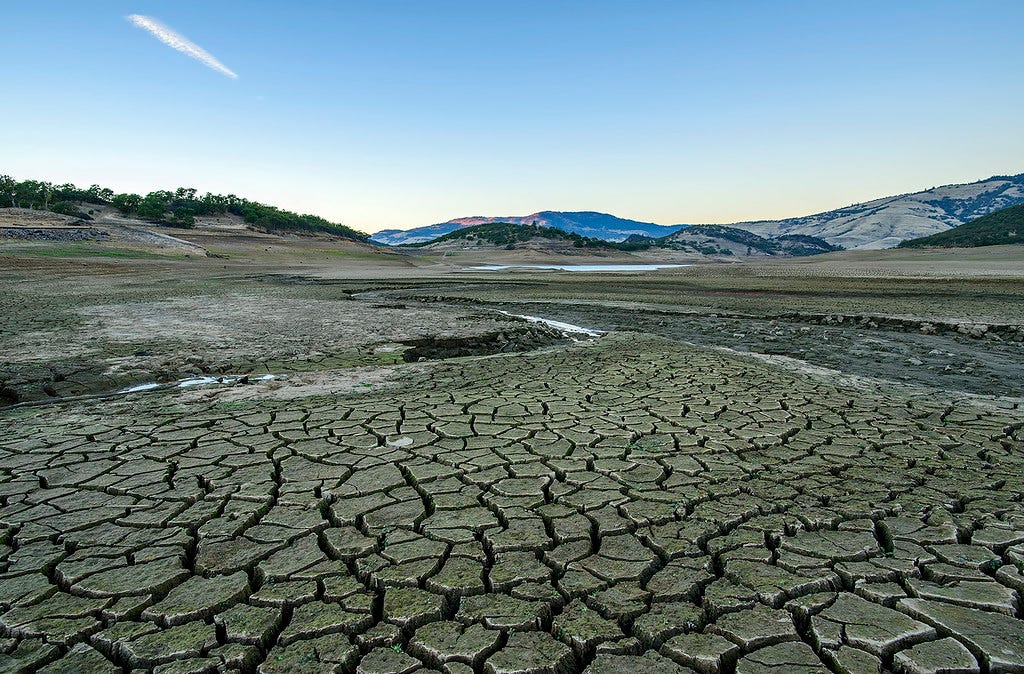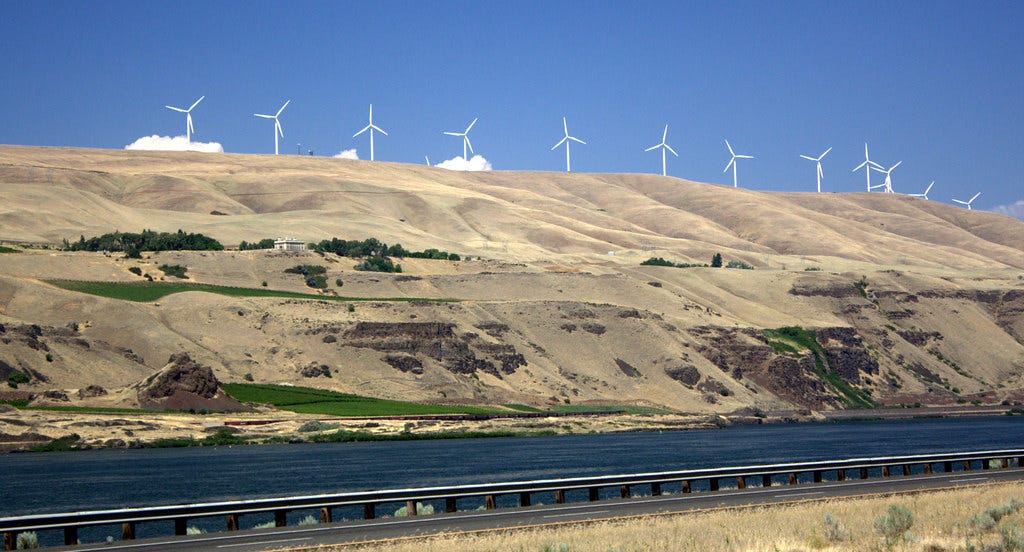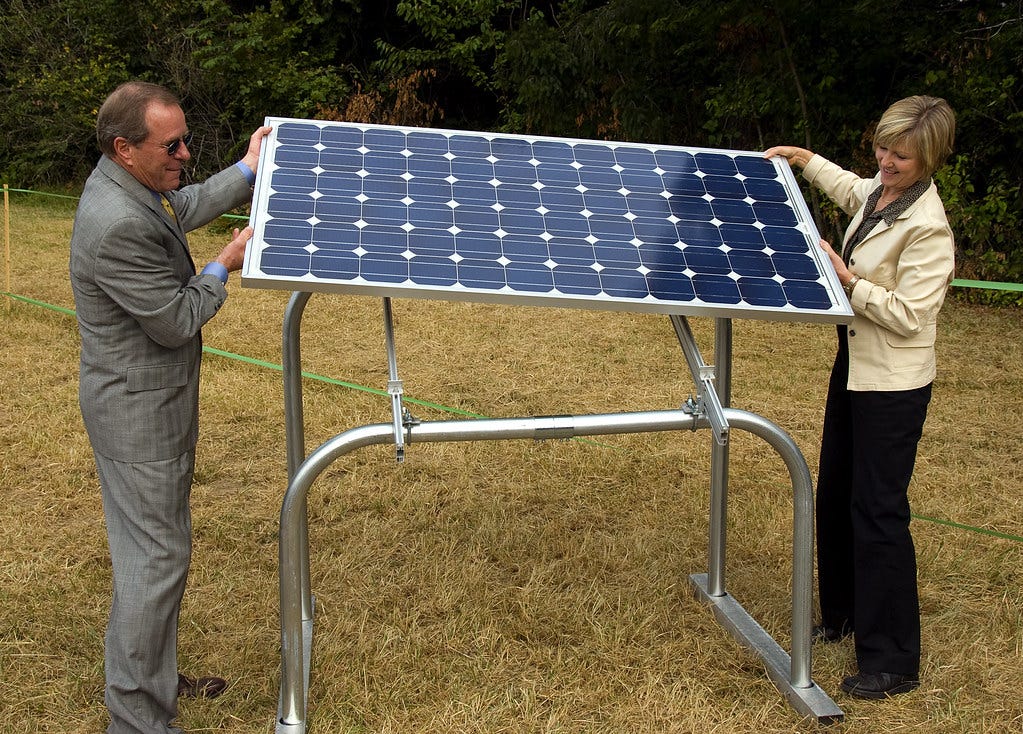Bill Bradbury: The case for action against climate change
The key is not waiting for the perfect solution, but rather continuing to explore and invest in the most effective ones based on the resources and expertise available at each level of government.
Housekeeping
Don’t miss Chapter 5 of Rediscovering the Oregon Way.
Get ready for posts from Kenji Sugahara, Jeff Gudman, and Sarah White.
Start your Monday off right — help expand The Oregon Way community by inviting five friends to the blog. We’re just shy of 500 subscribers!
Now to the post!
Bill Bradbury is the former Oregon Secretary of State.

In my early climate presentations (2007-2009), I would spend most of my talk on the problem: rising emissions trapping more heat, leading to more storms and droughts; very little time was spent on solutions such as renewable energy, fossil fuel-free transit options, and energy conservation in homes and office buildings, to name a few.
Now, I spend a majority of my presentation on solutions. The storms have become so big, the droughts so deep, and the hurricanes so overwhelming that the challenge now is convincing people not that there is a global climate problem but, rather, that we can affect it.
Solutions to the climate crisis are within reach, but in order to capture them, we must take urgent action today across every level of society.
-Al Gore
My current presentation starts with three big climate events: the 2019 Australian bush fires, Hurricane Dorian in the Bahamas in 2019, and US West Coast forest fires in 2017 thru 2020 (aided by extreme fire weather and logged over landscapes). The fires burned down the town of Paradise, California and scorched Brookings, Oregon—a burnt strip along almost 900 miles (1448 km) of the Pacific coastline. The Australian bush fires affected millions of hectares of wildlife habitat and destroyed thousands of buildings. And although wildfires have beneficial ecosystem effects, a perfect storm is in motion now fueled by climate change and the explosion of human development in fire-prone areas. To combat this, we need to move swiftly into solutions.

Green Energy – wind, solar and conservation
In 2014, electricity from solar and wind was cheaper than new coal and gas plants in approximately one percent of the world. By 2019, only five years later, solar and wind provided the cheapest sources of new electricity in two-thirds of the world. Within five more years these sources are expected to provide the cheapest new electricity for the whole world (Reback, 2019).
Wind energy has grown rapidly: in 1997, 1.5 GW was generated; in 2017, 540 GW was generated; and an estimate for 2025forecasts that 1000 GW will be generated (BNEF, 2019). Globally wind could supply worldwide electricity consumption 40 times over (Lu, 2009).
Solar is affordable and has immense potential. Enough solar energy reaches the earth every hour to fill all of the world’s energy needs for a year. The cost of solar generated electricity has dropped from over $79 per watt in 1976 to $0.25 per watt in 2019 (Harrington, 2019).
The only problem is the wind and sun energy are inconsistent day to day. So, the power system needs a dependable alternative source of energy that is easy to turn on and off like batteries to effectively use only wind and solar.
Batteries
Battery technology is developing quickly, and costs are dropping. Tesla has installed a massive lithium-ion battery to complement a wind farm in South Australia (Thornhill, 2019). The cost of lithium-ion batteries has dropped 85 percent from 2010 to 2018 (BNEF, 2019).
Lower costs mean greater use. In 2018, global annual energy storage additions more than doubled, to 9 GW, and is estimated to have surged over 70 percent in 2019 (Herring, 2019). The world is clearly moving to renewables with battery back-up as our preferred source of electricity.
Building Efficiency
Buildings account for over half of electricity demand globally and the market for existing building energy efficiency upgrades is growing dramatically.
In 2011, $118 billion was spent globally making existing buildings more energy efficient. In 2018, that total more than doubled to $298 billion employing an estimated 3.1 million people in the U.S. alone (Jordan, 2018).
Transportation
The second largest source of greenhouse gas is transportation – cars, trucks and, busses. Electrification of the sector puts a significant dent in greenhouse gas pollution, and significant progress is being made around the world. From The Times of India: “India is aiming for an all-electric car fleet by 2030, with petrol and diesel to be tanked” (Times, 2017).
India is joined in their effort to phase out fossil fuel vehicles by countries all over the world. Fifteen of those countries, including Canada, France, and Taiwan, have pledged to begin the phase-out no later than 2040, many will do so sooner (Roberts, 2017).
Busses are another large source of fossil fuel pollution. That’s why it is so significant that about half the world’s buses (approximately 1.2 million) will be electric by 2025. Thirty-five cities around the world, including London, Los Angeles, Mexico City, Paris, Rio de Janeiro, and Tokyo have all committed to buying zero emission (electric) busses starting in 2025. (C-40, 2020). Shanghai and Shenzhen, China have already committed to buying only electric buses now (Cleaner Air, 2018).
Lighting
More energy-efficient LED lighting can save individuals, businesses, and governments significant money by their longer lifespan and increased efficiency. LED lights also provide only the level of illumination needed at a given time, have a high degree of control over light direction, reduce light pollution, and mitigate unintended consequences to humans and wildlife (US DoE, 2017).
It is expected that as LED lighting gains market share (market share is estimated at 95% of the lighting needs by 2025) costs will continue their rapid drop. LED light output is measured in kilolumens (klm) and the cost per LED klm in 2008 was $155. By 2016, the price had dropped to $9 (Tableau Public, 2019).
The government of Japan began phasing out incandescent light bulbs in 2015 with a goal to completely eliminate them by 2020 (Lin, 2015).

Too Many Solutions?
The number of solutions in my climate presentations can become overwhelming due to information overload. My purpose, however, is to inspire hope that we can solve the climate crisis in time. Many are already feeling the harmful effects of climate change, but it will get much worse quickly if we do not act to implement solutions around the world now.
Cities across Oregon are exploring a number of these solutions, as is the State. The key is not waiting for the perfect solution, but rather continuing to explore and invest in the most effective ones based on the resources and expertise available at each level of government and in each community.
******************************************
Keep the conversation going:
Facebook (facebook.com/oregonway)
Twitter (@the_oregon_way)
Check out our podcast:



